61:19
audite aud 97.803
Apologies to the musicians and the recording company for the delay in reviewing this wonderful recording; I have just found it in a box that was put in my attic (and “lost”!) when I moved house.
Brian Clark
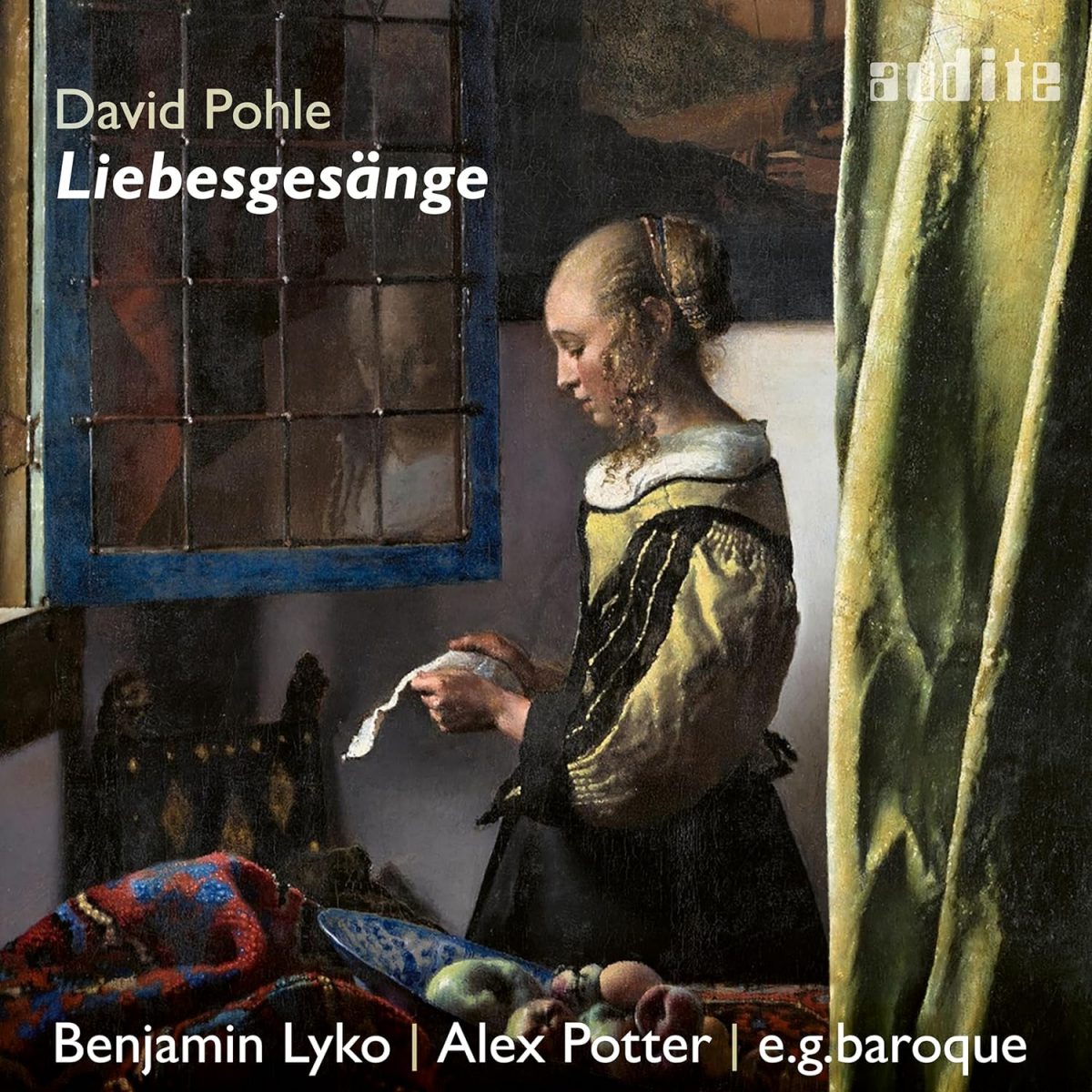
Apologies to the musicians and the recording company for the delay in reviewing this wonderful recording; I have just found it in a box that was put in my attic (and “lost”!) when I moved house.
Brian Clark
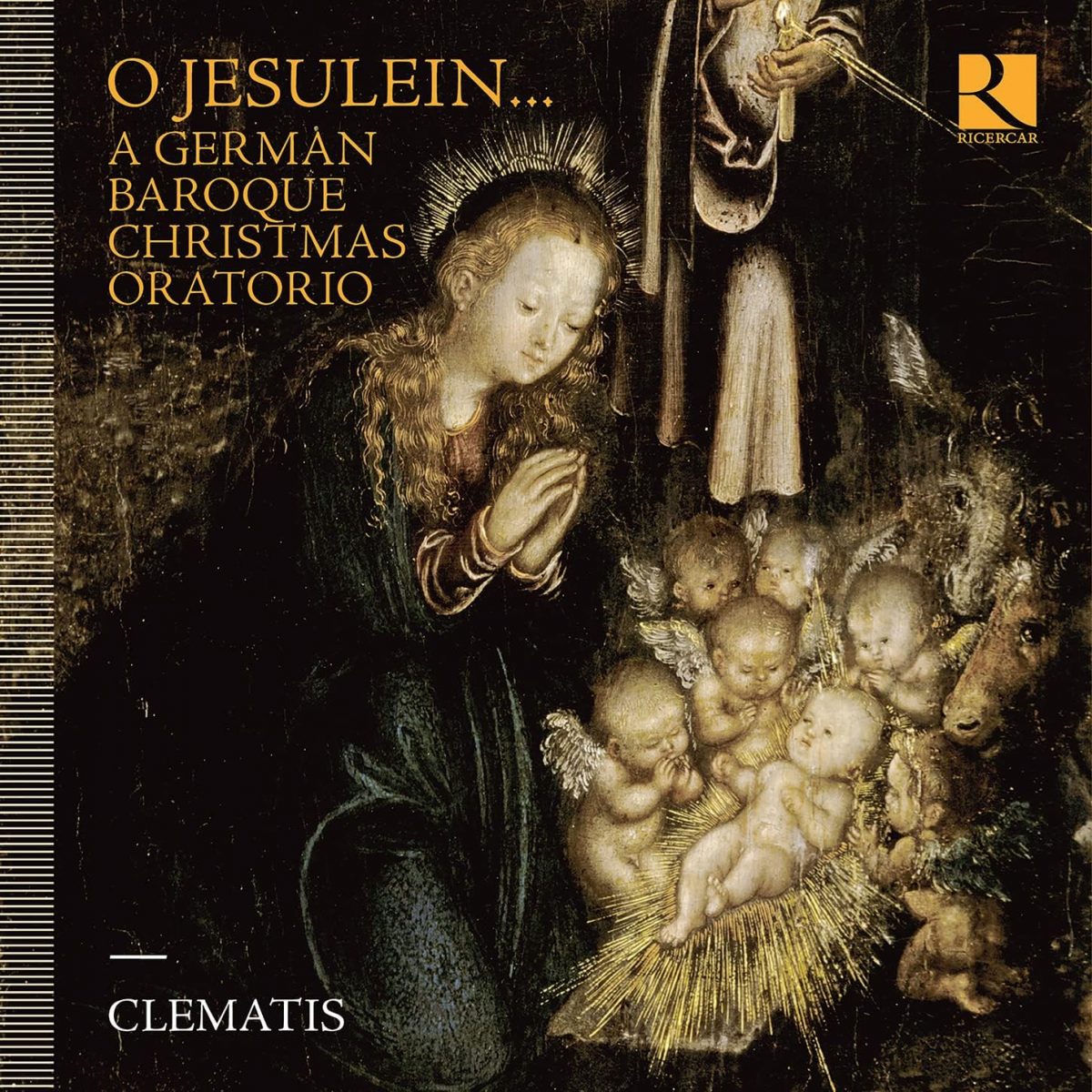
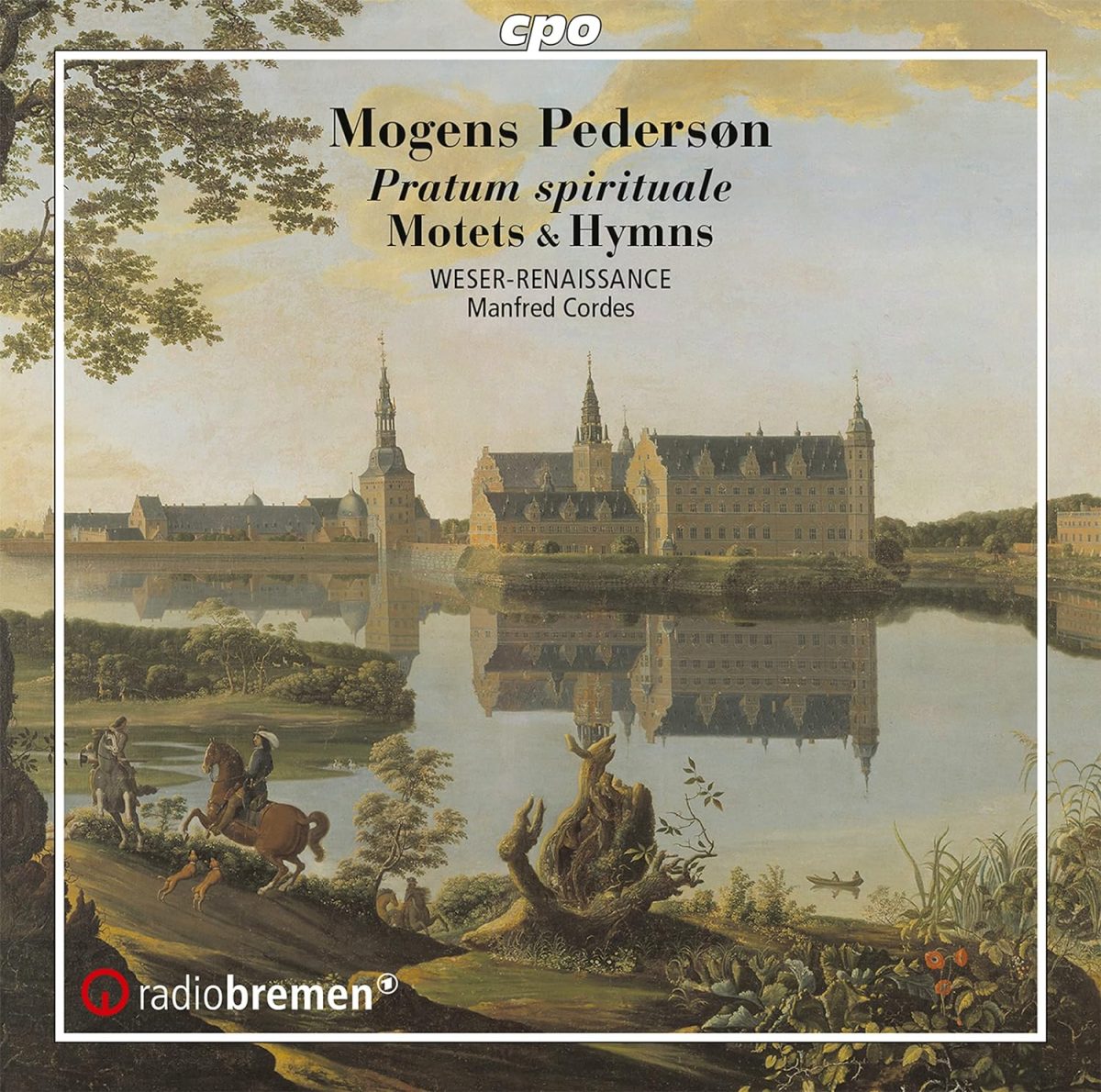
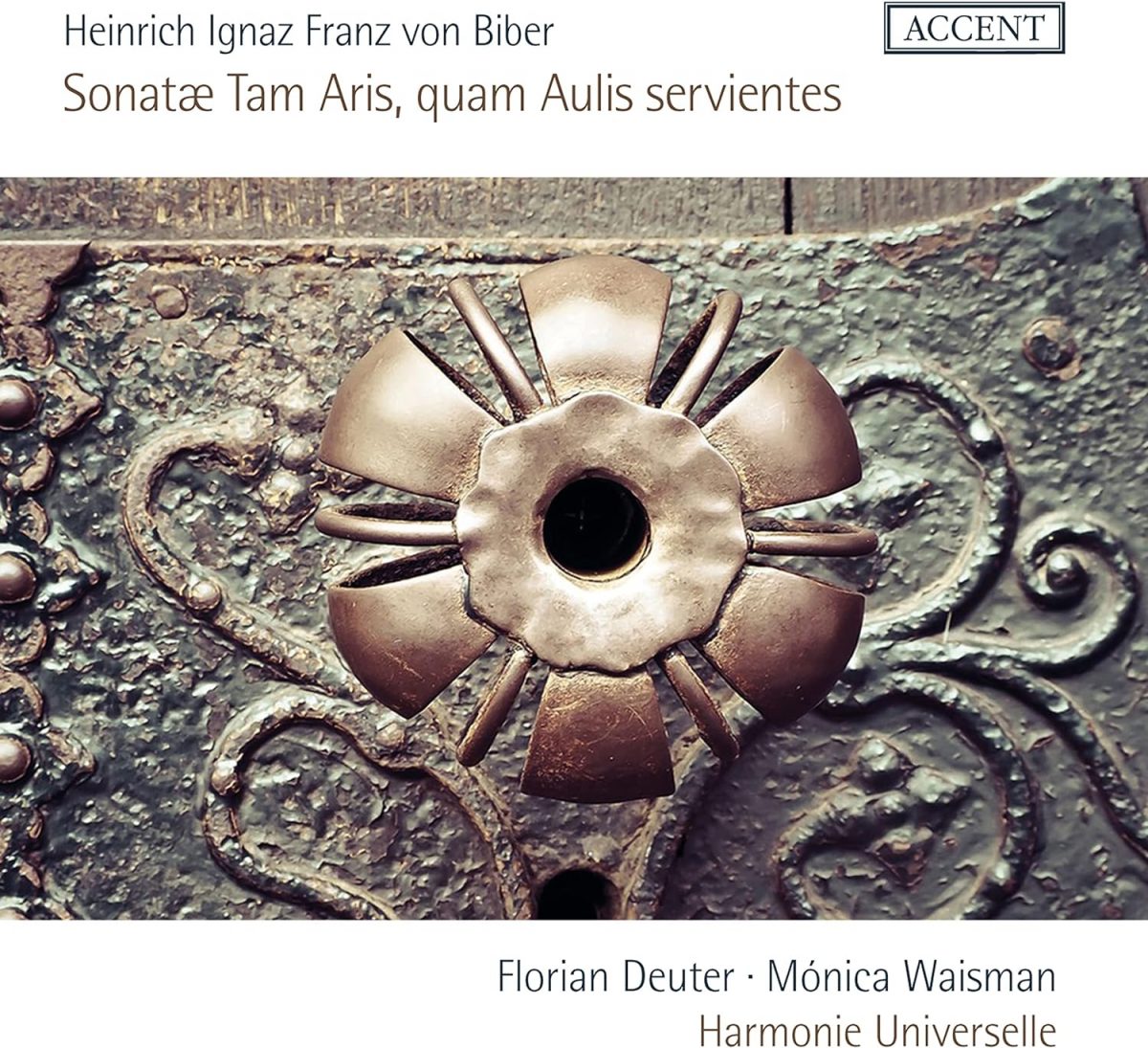
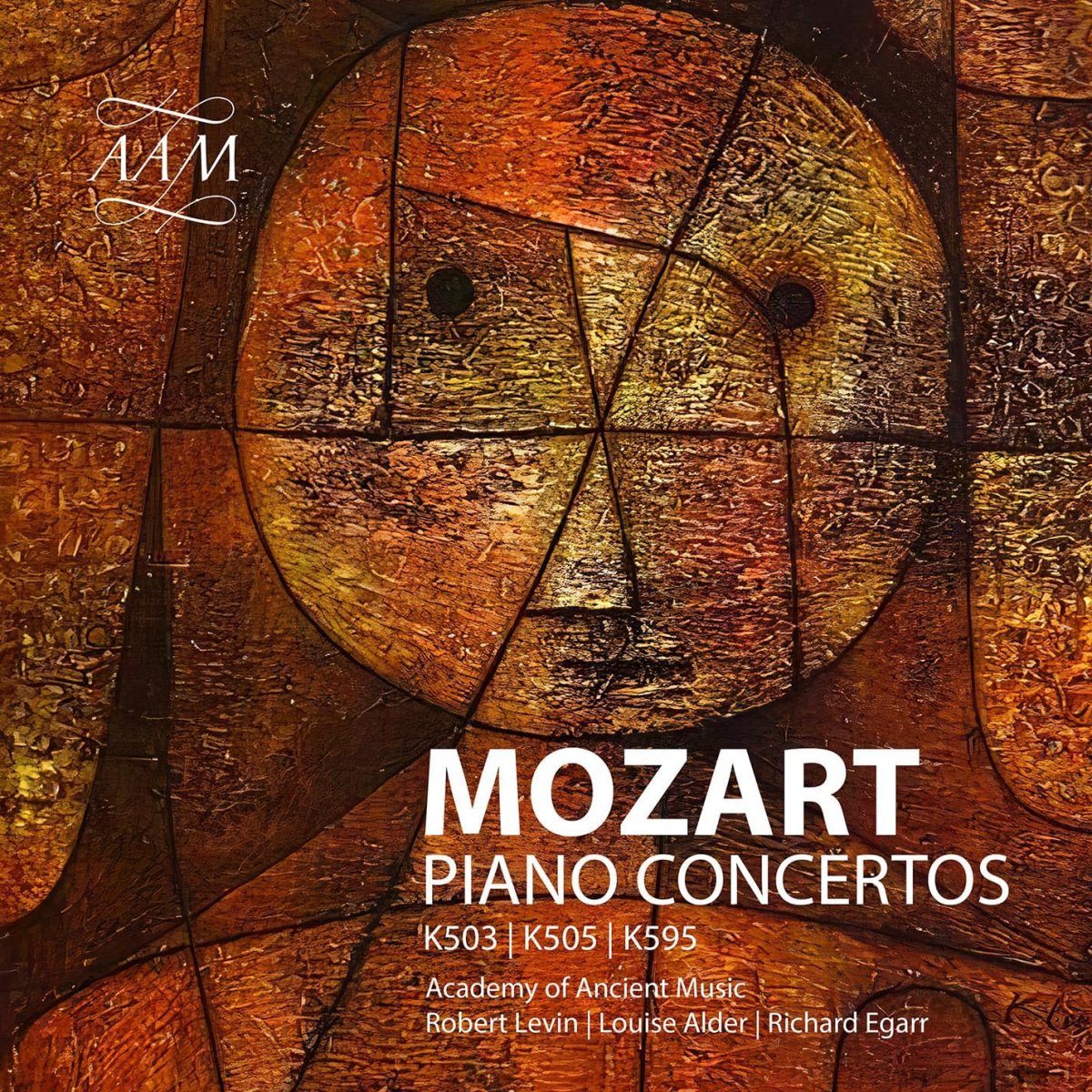
Robert Levin fortepiano, Louise Alder soprano, Academy of Ancient Music, conducted by Richard Egarr
66:39
AAM AAM045
This is a significant issue which finally brings to a close a series that was started thirty years ago but was brought to a halt after the AAM’s contract with Universal (Decca) ended. In 2023 the series was resumed on the AAM’s own label, the five CDs needed to complete the series now issued and reviewed by EMR. It is perhaps a piece of serendipity that this final CD is to my mind the most satisfying of the series since its resumption. I think there are three definable reasons: firstly, the restricted sound quality of several of the previous discs has concerned me. Here the venue is for the first time St John’s Smith Square and for whatever reason the quality is more open and spacious than other recent discs; also the fortepiano Robert Levin uses here is a beautifully-toned copy of a Viennese Anton Walter instrument of 1795 by Chris Maene of Ruiselede, Belgium. Warmly and roundly characterful across its range, it responds to Robert Levin’s fluent passage work to often mesmerizing effect. Finally, former AAM director Richard Egarr’s lively, positive direction seems to me a step up from that on other recent recordings in the series.
A further reason to celebrate this issue is of course that the CD includes not only two of Mozart’s greatest piano concertos but also one of his finest concert arias. The scena consists of an accompanied recitative and aria, Ch’io mi scordi di te? … Non temer amato ben, K505, the reason it is included here being that it includes an elaborate concertante part for keyboard. It was written for Nancy Storace, his first Susanna in Le nozze di Figaro, on the occasion of her final concert in Vienna in 1786. Mozart’s catalogue of works records that it was written for ‘Mlle Storace and me’, underlining suspicions that the relationship may have been more than simply a professional one. More importantly, it is sung with affectionate warmth by Louise Alder, who displays some fine chest notes and whose ornamentation is excellent with the exception of the absence of cadential (or any other) trills.
It has long been known that the oft-referred to ‘valedictory’ qualities of Concerto No. 27 in B-flat, K595 belong to the imagination, since it is now known to have been composed earlier, probably between 1787 and 1789, than was once believed. However, Cliff Eisen’s notes advance an argument for the same thing applying to Concerto No. 25 in C, K503 an idea new to me. Eisen argues that at least in part it may date from between 1784 and 1786, thus making it one of the works Mozart is known to have started and then put aside for completion when he wanted a new work. More importantly, as noted above, both works are among the greatest Mozart composed in a genre that he transformed over the course of his lifetime. For sheer grandeur he never excelled the opening Allegro maestoso of K503, the contrast with the reflective opening movement of K595 here underlined by the gentle, almost understated treatment of the latter.
Detailed comment on the individual concertos can be restricted to a few points. The opening of K503 might have benefitted from a little more ceremonial pomp, though that impression does not apply to its return after the development. The secondary idea in the same movement might be considered a bit brisk and inflexible. The ornamented entry by the piano in the central Andante of the same concerto is magical and the final Allegretto has a nice sense of operatic bustle. In K595 the unexpected restlessness that develops in the central Larghetto is well brought out, while the solo oboe’s beautifully played lead-back to the main theme can serve as a special example of the high quality of the AAMs playing.
Overall, the merits of Robert Levin’s playing by now need little further rehearsing. His ability to shape Mozart’s lines with equal idiomatic insight in both passaggi and cantabile is a joy, while his imaginative ornamentation never exceeds the bounds of stylish decoration. As already made clear this is a truly fitting conclusion to a series that for long looked as if it would remain a torso. Congratulations to all that oversaw its completion are very much in order.
Brian Robins
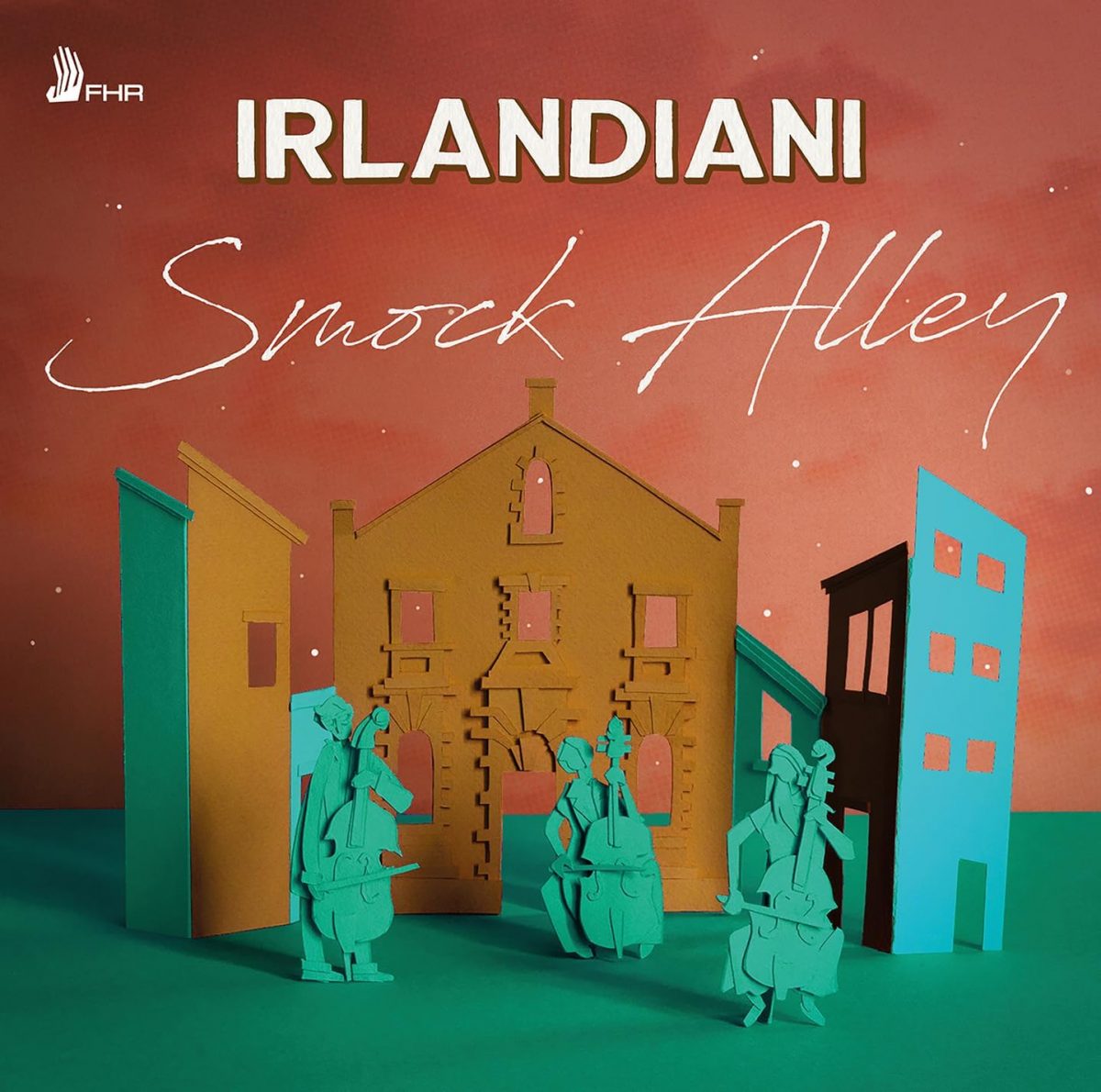
Irlandiani
61:15
FHR 144
This delightful CD juxtaposes traditional Irish music with the music of Italian masters, some of whom worked in Ireland. At the heart of the programme are the six duos for two cellos by Tommaso Giordani, who spent long periods of his life in Dublin as musical director of the Theatre in Smock Alley, and in whose music can be heard the influence of the traditional music he would have heard around him. Born in Dublin, the organist Thomas Roseingrave provides a further link with Italian music, travelling to Venice and encountering the Scarlatti family and becoming obsessed with the music of Domenico Scarlatti, which he published with a charming musical introduction of his own composition – it is recorded here followed by two of Scarlatti’s sonatas. Francesco Geminiani lived in Dublin several times and indeed died there in 1762 – he is represented by a cello sonata op 5/1. It is fascinating to have confirmed the extent to which Dublin was an international musical crucible in the years following Handel’s Messiah performances there. Irlandiani play all this music with an elegant musicality, and wisely don’t overplay the ‘celtic’ aspects of the traditional music, even when they are joined by Irish flautist Eimear McGeown. The inclusion of a composition by the group’s lead cellist Carina Drury, lovely as it is, is maybe a bit of an indulgence with its completely different idiom – better maybe to have ended the CD with the spirited account of The Rakes of Westermeath? On the other hand, one of the highlights for me was Drury’s imaginative arrangement of a glee by Francis Ireland (Hutcheson) To Sleep – Hutcheson was indeed a lad o’ pairts, a lecturer in chemistry at Trinity Dublin and a consultant physician as well as clearly a competent composer. I very much enjoyed this CD, the result of much revelatory research and a paragon of tasteful and expressive performance.
D. James Ross
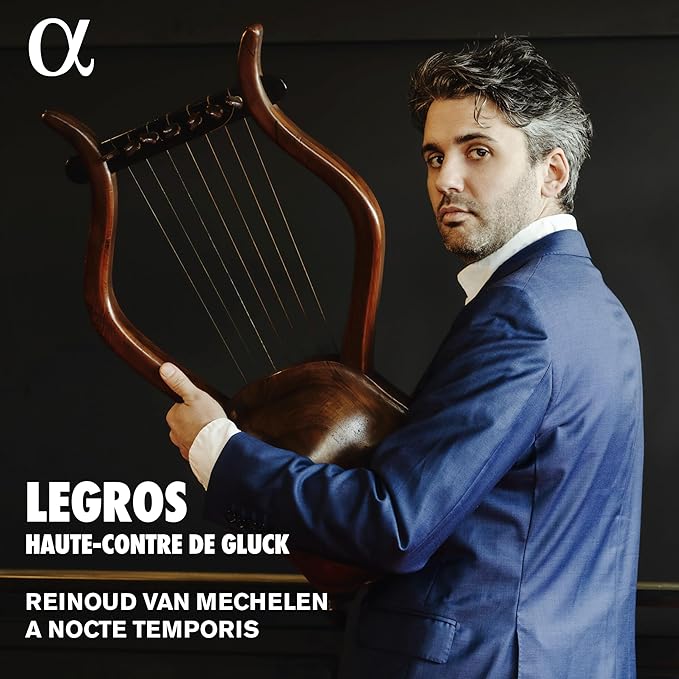
Reinoud de Mechelen, A Nocte Temporis
72:19
Alpha 992
This CD brings together repertoire by a variety of composers for the uniquely French haute-contre or high tenor voice, personified here by the excellent soloist Reinoud van Mechelen. Also directing the ensemble A Nocte Temporis, van Mechelen presents a selection of haute-contre arias which would have been sung by the operatic tenor Joseph Legros who dominated the Paris Opéra for twenty years from his appointment in 1764. During his tenure, he sang the music of still familiar composers such as Gluck and JC Bach, as well as now less familiar composers such as François-Joseph Gossec, André-Ernest-Modeste Grétry and Niccoló Piccinni and practically forgotten musicians such as Jean-Benjamin de la Borde, Pierre-Montan Berton, Jean-Claude Trial and Joseph Legros himself. Reinoud van Mechelen has a lovely effortless high tenor voice, instantly accounting for the enduring popularity of Legros. Supported by a superb instrumental ensemble, he wisely lets them occasionally play a purely instrumental piece for variety, but the main virtue of this CD is his lovely vocal interpretation of this unfamiliar repertoire. Perhaps inevitably, the musical standards take a marked upturn with the advent of Gluck, just as his arrival at the Paris Opéra in 1774 seems to have well and truly shaken things up. The reported tension between Legros and Gluck may have been largely confected, and certainly the music Gluck wrote for Legros to sing exploited his gifts in a thorough and musically imaginative way. An aria composed by Legros for himself to sing has an insouciant charm, but he was probably right to keep on the day job, singing the music of his compositional betters! This CD, the third in a series exploring music written for haute-contres and preceded by Lully and Rameau’s star tenors, very usefully and stylishly brings together some beautiful music, and I feel a singer who also directs his accompanying ensemble brings a further dimension to this fascinating and enjoyable repertoire.
D. James Ross
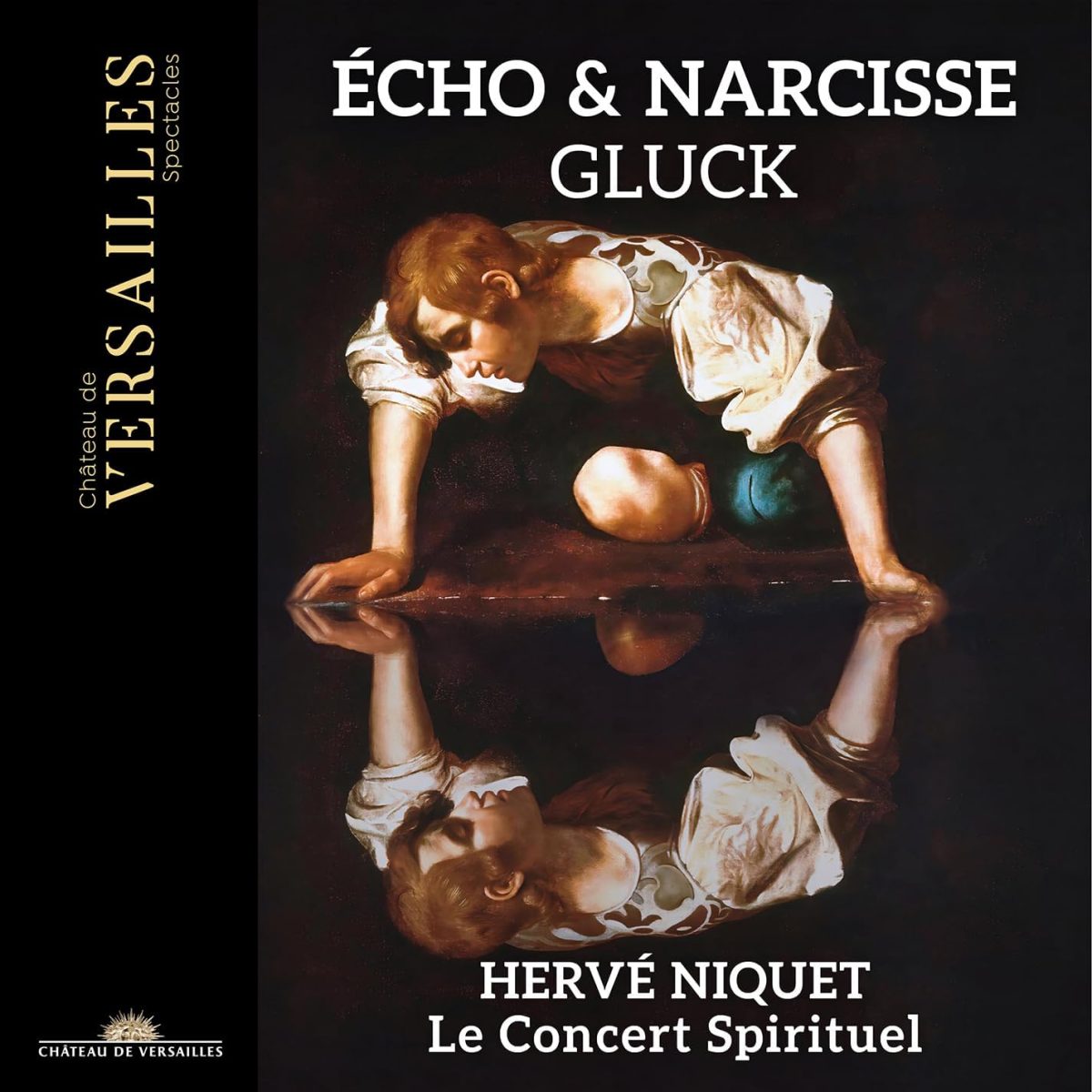
Le Concert Spirituel, Hervé Niquet
102:19 (2 CDs in a card triptych)
Château de Versailles Spectacles CVS095
The excellent Versailles Spectacle concert and recording series brings us this intriguing recording of Gluck’s last opera, Echo and Narcissus, a light pastoral which turns out to be of much more significance than first appearances would suggest. As a result of a mixture of bad luck, bad timing and bad casting the work was a comprehensive failure at its first performances, much to the chagrin of its composer, who clearly felt it deserved a better reception. On the basis of this delightfully understated performance, I can see why Gluck was so frustrated by its lack of popular success. Not always known for understatement, on this occasion Niquet has astutely cast the piece with appropriately light voices and allowed the music to speak for itself. One particular virtue of the work is Gluck’s imaginative orchestral writing, making particularly imaginative use of horns and clarinets. He also largely succeeds in his aim to blend the French and Italian operatic styles – the ‘extras’ are given music with a light Italianate charm while the central characters’ more profound music recalls the music of Rameau – while you would have thought the generally undemanding musical idiom and the episodic nature of the piece would have appealed to the short musical attention span of the French court in 1779. None of these virtues nor even the patronage of Marie Antoinette herself would save the work from failure and obscurity until it was ‘rediscovered’ in the 20th century. The precise and tasteful playing and singing of Le Concert Spiritual bring this little gem to vivid life, and while the positioning, with the chorus and soloists onstage and the orchestra down on the flat tends to flatten out the orchestral colours a little, the overall sound and balance are pleasing, and the acoustic of the Opéra Royal de Versailles provides just the right amount of resonance, reflecting the sound Gluck would have been writing for. It was probably much too late for the self-obsessed and hopelessly superficial court of Louis XVI and Marie Antoinette to learn any valuable lessons from Gluck’s pastoral – in any case, Gluck never returned to opera in the last decade of his life, while just a couple of years after his death the entire edifice of the French Court was swept away in revolution. In many ways, the innocent simplicity of Gluck’s Echo & Narcisse evokes a whole era of French music, part of a culture blissfully unaware of its shortcomings and the gruesome fate that awaited it.
D. James Ross
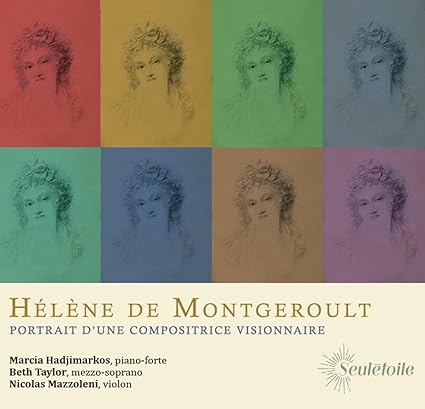
Portrait d’une compositrice visionnaire
Marcia Hadjimarkos fortepiano, Beth Taylor mS, Nicolas Mazzolini violin
61:51
Seulétoile SE09
The composer and pianist Hélène de Nervo, Marquise de Montgeroult by marriage, 1764-1836) lived through tumultuous times in her native France. With such a colourful career and such characterful music as the performers have found here, it is remarkable that she has passed below the radar for so long. A student of Dussek and Clementi, Montgeroult benefited from the rapid development of the piano-forte during her lifetime, a process she was able to take full advantage of during her years in Paris. Pianist Hadjimarkos also takes full advantage of the developing pianoforte in her choice of some striking stops in her performances of the solo Etudes (1812 and 1816) and accompanying Beth Taylor’s powerful accounts of the Nocturnes (1807). She plays a beautiful 1817 pianoforte by Antoine Neuhaus. The piano works appear as an appendix to a Complete Method for Piano, and while seven of the Etudes recorded here are for both hands, a further three focus more intently on the right hand and yet another on the left – presumably Montgeroult’s intention was to strengthen both hands of the performer independently and to build up their distinctive roles. Given their very practical purpose, these Etudes are remarkably imaginative and effective, and are given superbly expressive performances here. The subtitle of the CD is ‘Portrait d’une compositrice visionnaire’ and this aspect of Montgeroult’s strikingly individual musical style is very much to the fore in the performers’ minds. Mezzosoprano Beth Taylor gives beautifully eloquent accounts of the six short Nocturnes op 6 for solo voice and piano accompaniment. In the style of the time, the opus 2 Sonata no 6 (1800) for piano with accompaniment by the violin is just that, a piece very much led by the piano with fairly restrained commentary from the violin. It too is imaginatively presented by Hadjimarkkos with violinist Nicolas Mazzoleni. Montgeroult’s biographer Jérôme Dorival considers her the missing link between Mozart and Chopin, and while she might not be the only deserving candidate for this title, she is clearly an important composer who thoroughly deserves a place in the history of the early piano and in composition generally. These performers have done us all a great service in shining such a musically convincing spotlight on a composer who clearly merits much more attention.
D. James Ross
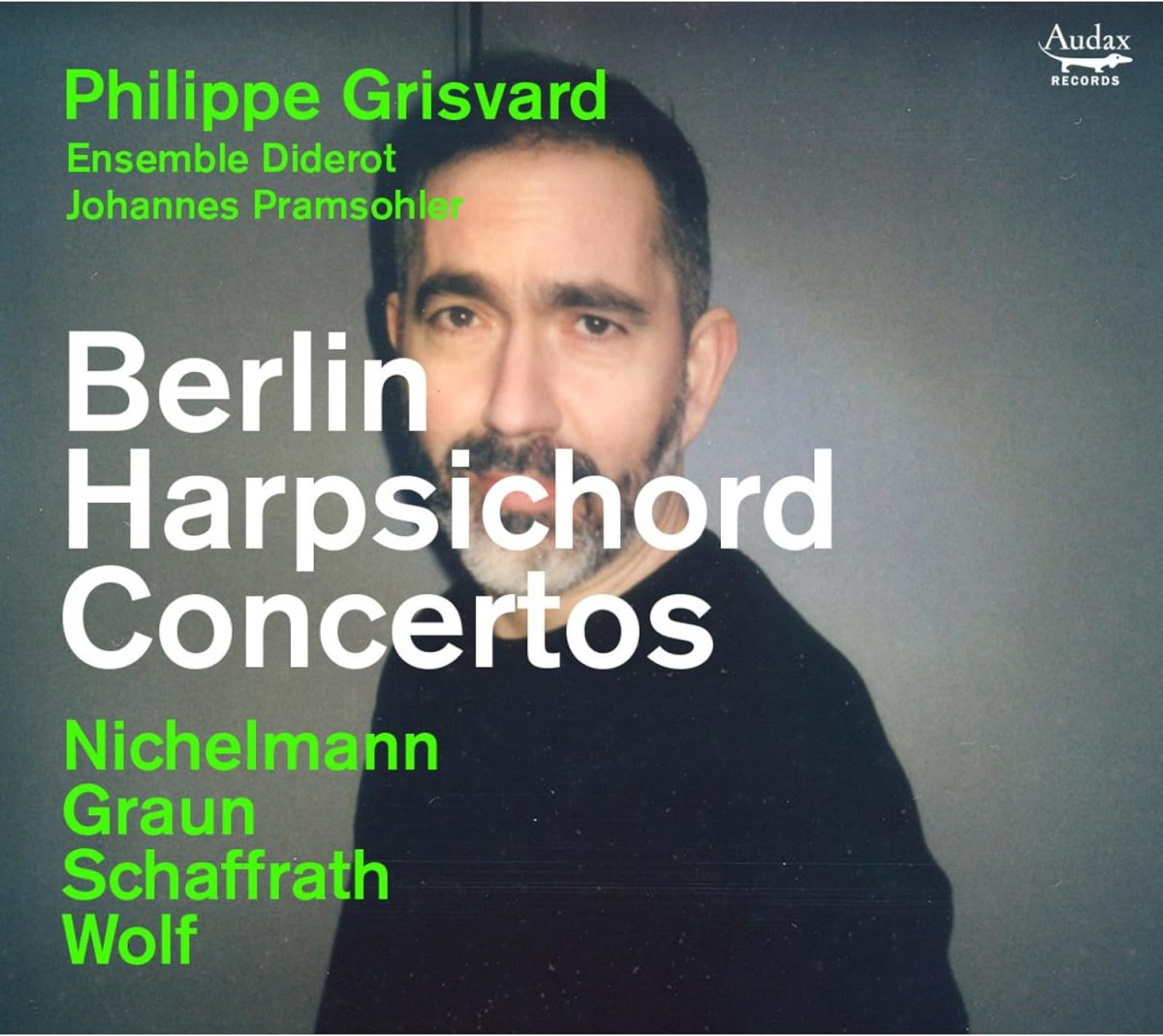
Philippe Grisvard, Ensemble Diderot, Johannes Pramsohler
77:45
Audax Records ADX11211
This is a welcome recording of some unjustly neglected music. Great composers cast long shadows and, in this case, those who overlapped with J.S. Bach and his son C.P.E. have not always had much of a look in. Grisvard and the Ensemble Diderot make an impressive start at remedying that situation with this recording of concertos by four composers who had strong connections to the Berlin court of Frederick the Great. They have deliberately avoided C.P.E. Bach in favour of introducing music by his near contemporaries. Peter Wollny’s very informative sleeve notes give short biographies and provide the context for the music. Christoph Nichelmann, Carl Heinrich Graun and Christoph Schaffrath were close contemporaries of C.P.E.; Ernst Wilhelm Wolf was twenty years younger. Nichelmann was a pupil in the Leipzig Thomasschule in the early 1730s and later served as second harpsichordist in Berlin for a time, until a personality clash with C.P.E. led to him leaving that court. Graun is mainly known for his operas and a Passion composed for Berlin. Schaffrath worked for Frederick as crown prince, and later for his sister Anna Amalia. Wolf did not actually work in Berlin – he served in Leipzig and Weimar – but came under the Prussian capital’s musical influence through the mediation of Georg Benda.
The music draws clear inspiration from both Bachs, with a strong sense of Sturm und Drang clear from the first movement of Nichelmann’s D minor concerto which opens the disc. Schaffrath’s first movement is a muscular fugue in C minor, starting in the strings but later developed in an extended solo passage by the keyboard. Ritornello form predominates throughout these works, with extended solo passages for harpsichord, especially so in Wolf’s somewhat later concerto. The dialogue between soloist and strings is greatly assisted by the recording engineers, who have produced an excellent balance. Although there are only five string players, their playing and the recording quality tricks the ear into thinking that there are several more players in ripieno passages. Grisvard plays on a Mietke copy by Christoph Kern which has a full rich sound and good registrational capabilities. Cadenzas survive for the Nichelmann and Schaffrath works; Grisvard has developed his own for the other two which sound entirely idiomatic. His playing throughout is both confident and nuanced, showing a real understanding of the style of this transitional period, with its predictabilities and idiosyncrasies. This comes across as very attractive music, played with energy and plenty of forward drive. These performances really whet the appetite for more of this music and the recording can be highly recommended.
Noel O’Regan